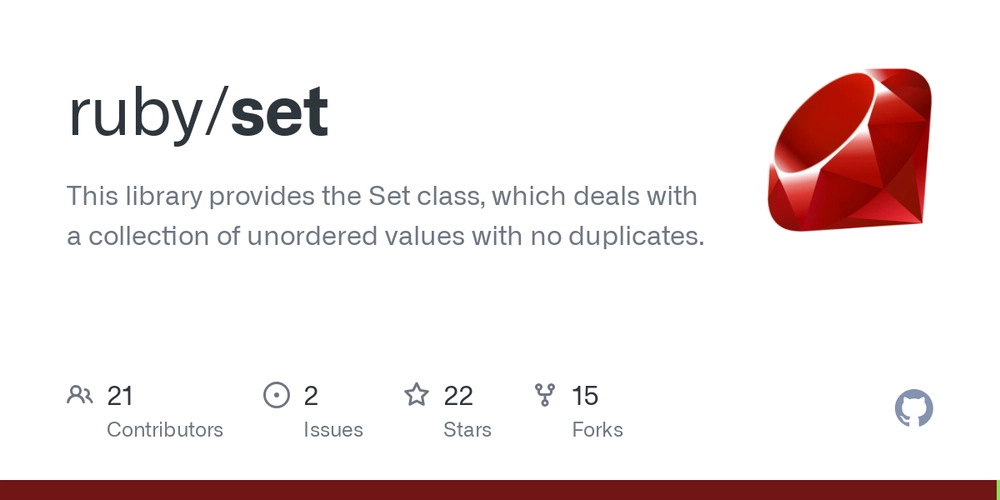Set Class in Ruby
In Ruby, the Set class is a collection of unordered, unique values—kind of like an array, but with no duplicates allowed. It maintains unique elements only. Supports set operations: union, intersection, difference, etc. How to use: require "set" s = Set.new([1, 2, 3]) s.add(3) # duplicate, won't be added s.add(4) puts s.inspect # => # Set Operations: a = Set.new([1, 2, 3]) b = Set.new([3, 4, 5]) puts a | b # Union => # puts a & b # Intersection => # puts a - b # Difference => # Conversion: arr = [1, 2, 2, 3] unique_set = Set.new(arr) puts unique_set.to_a # => [1, 2, 3] When to Use Set: When you need to automatically eliminate duplicates. When performing set-theoretic operations (like unions or intersections). For efficient membership checks (similar to using a hash).

In Ruby, the Set class is a collection of unordered, unique values—kind of like an array, but with no duplicates allowed. It maintains unique elements only. Supports set operations: union, intersection, difference, etc.
How to use:
require "set"
s = Set.new([1, 2, 3])
s.add(3) # duplicate, won't be added
s.add(4)
puts s.inspect # => #Set Operations:
a = Set.new([1, 2, 3])
b = Set.new([3, 4, 5])
puts a | b # Union => #Conversion:
arr = [1, 2, 2, 3]
unique_set = Set.new(arr)
puts unique_set.to_a # => [1, 2, 3]
When to Use Set:
- When you need to automatically eliminate duplicates.
- When performing set-theoretic operations (like unions or intersections).
- For efficient membership checks (similar to using a hash).









































































![Apple Developing AI 'Vibe-Coding' Assistant for Xcode With Anthropic [Report]](https://www.iclarified.com/images/news/97200/97200/97200-640.jpg)
![Apple's New Ads Spotlight Apple Watch for Kids [Video]](https://www.iclarified.com/images/news/97197/97197/97197-640.jpg)














































































































_Inge_Johnsson-Alamy.jpg?width=1280&auto=webp&quality=80&disable=upscale#)




























































































































![[The AI Show Episode 145]: OpenAI Releases o3 and o4-mini, AI Is Causing “Quiet Layoffs,” Executive Order on Youth AI Education & GPT-4o’s Controversial Update](https://www.marketingaiinstitute.com/hubfs/ep%20145%20cover.png)





























































































































































![From Art School Drop-out to Microsoft Engineer with Shashi Lo [Podcast #170]](https://cdn.hashnode.com/res/hashnode/image/upload/v1746203291209/439bf16b-c820-4fe8-b69e-94d80533b2df.png?#)






































































































